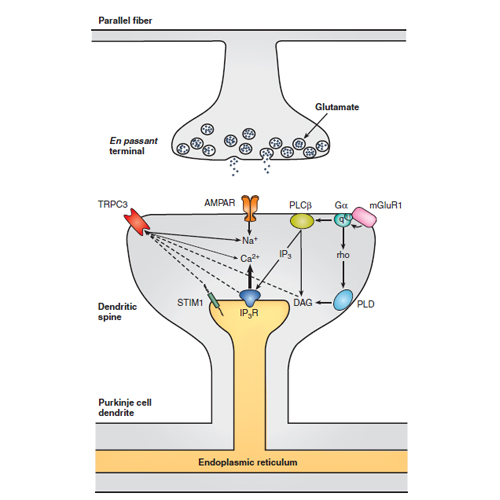mGluR1/TRPC3-mediated Synaptic Transmission and Calcium Signaling in Mammalian Central Neurons
26-Jan-2011
Cold Spring Harbor Perspectives in Biology, 2011, doi: 10.1101/cshperspect.a006726, published on 26.01.2011
Cold Spring Harbor Perspectives in Biology, online article
Cold Spring Harbor Perspectives in Biology, online article
Metabotropic glutamate receptors type 1 (mGluR1s) are required for a normal function of the mammalian brain. They are particularly important for synaptic signaling and plasticity in the cerebellum. Unlike ionotropic glutamate receptors that mediate rapid synaptic transmission, mGluR1s produce in cerebellar Purkinje cells a complex postsynaptic response consisting of two distinct signal components, namely a local dendritic calcium signal and a slow excitatory postsynaptic potential. The basic mechanisms underlying these synaptic responses were clarified in recent years. First, the work of several groups established that the dendritic calcium signal results from IP3 receptor-mediated calcium release from internal stores. Second, it was recently found that mGluR1-mediated slow excitatory postsynaptic potentials are mediated by the transient receptor potential channel TRPC3. This surprising finding established TRPC3 as a novel postsynaptic channel for glutamatergic synaptic transmission.











